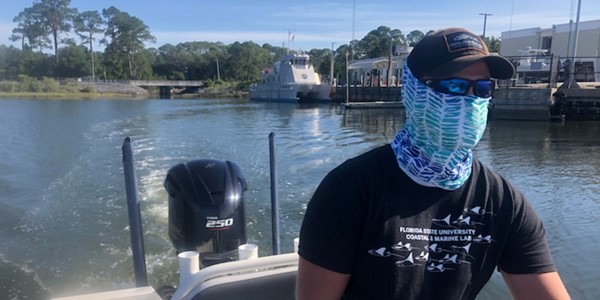
Research in the Time of COVID-19
Several months after the COVID-19 pandemic began, universities across the nation started to re-open their doors to their staff, faculty, and graduate students while implementing many new protocols in an effort to protect the health and safety of their employees. The Florida State University Coastal & Marine Laboratory is no exception.
After a complete state-wide shutdown in Florida -- with only essential staff allowed on campuses, mid-May heralded in a “soft-opening” that allowed up to 25% of the full-compliment of personnel onsite at a time. The lab, like the main campus, requires that everyone entering the gate wears a mask, practices social distancing of at least six feet, and adheres to FSU travel restrictions. In these unusual times, FSUCML’s main goal is to ensure the safety of their employees while allowing essential research to continue. Read on to learn from our faculty and staff what they are up to and how they are coping with research in the time of COVID19.
Chris Peters, Diving Safety Officer
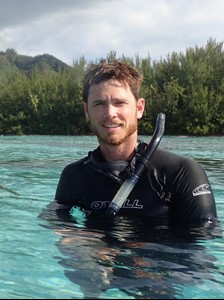 As the Diving Safety Officer (DSO) for FSU, I oversee diving operations at FSU Coastal & Marine Lab and manage the Academic Diving Program (ADP). ADP facilitates safe and effective underwater science for faculty, staff and students at FSU. We train divers, ensure compliance with national standards and provide logistical support for ongoing research. Research topics range from prehistoric archaeology, to tracking sharks, to genetic and ecological processes. The highlight of the job is seeing so many fields of study through the lenses of both students and professionals.
As the Diving Safety Officer (DSO) for FSU, I oversee diving operations at FSU Coastal & Marine Lab and manage the Academic Diving Program (ADP). ADP facilitates safe and effective underwater science for faculty, staff and students at FSU. We train divers, ensure compliance with national standards and provide logistical support for ongoing research. Research topics range from prehistoric archaeology, to tracking sharks, to genetic and ecological processes. The highlight of the job is seeing so many fields of study through the lenses of both students and professionals.
Unfortunately, the pandemic has created a major hurdle in continuing research in the scientific diving world. Diving operations rely on buddy teams and frequently work out of small boats, so social distancing becomes very difficult. Divers are accustomed to wearing masks and respirators, but through diving use and equipment safety checks, they can become sources of contamination rather than protection. As a result, the FSU Diving Control Board suspended diving operations at the end of March over concerns of community spread and increased risk of infection. State and University action followed shortly thereafter, and only essential diving operations were authorized through the end of the June. We continued to dive at FSUCML to provide essential maintenance of the Lab's seawater system, but local training and research diving, and international research trips in the Caribbean, British Columbia and across the Pacific were canceled.
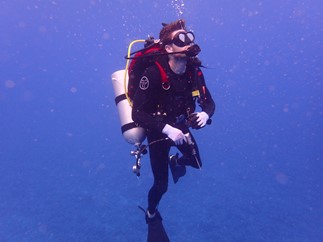 Beginning late in July and now into August, limited scientific and training dives have resumed at the FSUCML and across FSU. Divers are able to continue their research while adhering to strict guidelines in hopes of minimizing potential coronavirus transmission.
Beginning late in July and now into August, limited scientific and training dives have resumed at the FSUCML and across FSU. Divers are able to continue their research while adhering to strict guidelines in hopes of minimizing potential coronavirus transmission.
The suspension of diving has been frustrating, but I'm very grateful to work for an institution that prioritizes the health and safety of its community members and our families. Early in the process, FSU administrators looked for creative solutions to enable work while also ensuring the ability to effectively socially distance. The pandemic has been a good lesson in patience, and I look forward to when we are operating once again at full capacity.
**Pictures taken before statewide shutdown
Aaron Ridall, PhD student, Ingels Lab
 I am a second year Ph.D. student studying how microplastics concentrations in sediments change seasonally. Pre-COVID, I would regularly travel to Panama City Beach, Florida where I sample sediments from two distinct waterways, one that receives effluent from the Panama City Wastewater Treatment Plant and the other in West Bay, Panama City Beach, which is not affected by the wastewater effluent. This allows me to compare the effects of microplastics in the sediment in these two different environments. To gather samples for comparison, I would take sediment cores from multiple stations within each waterway to determine how microplastics pollution varies due to the level of human impact. I would also conduct the sampling seasonally to determine if there is temporal variation within and between the sites. My overall goal is to use these data to determine baseline microplastics pollution levels from which to conduct microcosm research on the effects of microplastics on nitrogen and oxygen availability in benthic systems.
I am a second year Ph.D. student studying how microplastics concentrations in sediments change seasonally. Pre-COVID, I would regularly travel to Panama City Beach, Florida where I sample sediments from two distinct waterways, one that receives effluent from the Panama City Wastewater Treatment Plant and the other in West Bay, Panama City Beach, which is not affected by the wastewater effluent. This allows me to compare the effects of microplastics in the sediment in these two different environments. To gather samples for comparison, I would take sediment cores from multiple stations within each waterway to determine how microplastics pollution varies due to the level of human impact. I would also conduct the sampling seasonally to determine if there is temporal variation within and between the sites. My overall goal is to use these data to determine baseline microplastics pollution levels from which to conduct microcosm research on the effects of microplastics on nitrogen and oxygen availability in benthic systems.
Unfortunately, I fall into multiple high-risk groups for COVID-19, which means that I have had to halt all my field work for the summer. Luckily, my start date for my temporal samples doesn’t need to be exact; as long as I conduct sampling for one full year to get an accurate representation of all seasons, my research will be sound. The soft opening of the lab and the restrictions imposed by the new safety guidelines have allowed me to focus on the skills that I will use after I collect my samples. I have spent my allotted time at the lab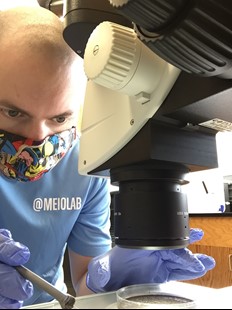 washing sediment samples, separating samples into their component parts, and removing nematodes from processed samples. All three steps are required methods in my own research, and the work that I’m doing with Dr. Ingels’ samples has allowed me to practice the integral skills for my own future research.
washing sediment samples, separating samples into their component parts, and removing nematodes from processed samples. All three steps are required methods in my own research, and the work that I’m doing with Dr. Ingels’ samples has allowed me to practice the integral skills for my own future research.
Overall, the COVID-19 pandemic has shown me how important it is to remain flexible when planning out research. I am grateful for the access I’ve been granted at the lab because it gets me out of my house and allows me to do work in a safe, clean environment. I am interested in how the quarantine will affect my future research because though environmental conservationists have been applauding the improved health of many ecosystems, plastic bag and take-out containers have dramatically increased in use over the past few months, thus increasing the amount of microplastics that will end up in marine sediments.
Alexandra Hooks, PhD student, Burgess Lab
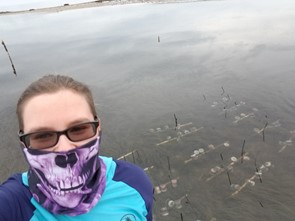 I am a fifth year graduate student studying reproduction of the Florida crown conch, (Melongena corona), the females of which mate with multiple males. I chose to study crown conch because they are relatively small, docile, and easy to keep in captivity for experimental purposes.
I am a fifth year graduate student studying reproduction of the Florida crown conch, (Melongena corona), the females of which mate with multiple males. I chose to study crown conch because they are relatively small, docile, and easy to keep in captivity for experimental purposes.
My primary research question focuses on whether such promiscuous mating contributes to their reproductive success. This work is important because: 1) crown conch are voracious oyster predators and a contributing factor in the decline of oyster populations in Florida waters; and 2) promiscuous mating is not well understood, despite its prevalence across a number of different taxa (e.g., fishes, sea turtles, crabs, other snails). Using a species that I can easily manipulate the number of mating partners in the lab helps me directly test the cost and benefits of this common mating strategy.
I started research at the marine lab in my first year, living in the dorms during the summer. While in the field, I typically conducted surveys on snail abundance and mating behavior with a crew of undergraduate students, and collected adult snails for mating experiments in the lab.
Questions I have tested include 1) how long does a female mate with a single male and does time spent mating change as more mating partners are introduced (1-5 mating partners within a 72hr period), 2) does increasing the number of mates increase the number or size (i.e., phenotypic diversity) of offspring produced, and 3) does increasing the number of mates increase genetic diversity of the offspring.
So far I have found: 1) that a single mating event could last from one hour to 10 hours and that the time per mating decreased with each additional male; and 2) that increasing the number of mates did not increase the number or size of offspring produced, but females that mated with only one mate were less likely to lay eggs, suggesting that the females delayed egg laying until they encountered and mated with more males.
Given that females do not mate with multiple males to increase the number of offspring or the offspring’s phenotypic diversity (e.g., size), my next step includes investigating whether having multiple mates increases the offspring’s genetic diversity. Genetic diversity of offspring can result in enhanced population survival thus helping population numbers to grow or remain stable.
The COVID-19 pandemic required that I adjust my research plan, although I am very grateful to be granted access to the lab because this is the last bit of data collection I need to finish my dissertation research! I had to reduce the amount of time that I spend in the field and lab because I have no undergraduate students to help with sample collection. Also, my time in the lab building—like everyone else’s -- is limited to ensure social distancing among employees and other scientists. Fortunately, I am still able to visit the oyster reef adjacent to the lab and collect samples to continue my research. Also, I am taking the time to connect via FaceTime with my family and friends more frequently than I normally would, which is something I have really enjoyed.
Joe Rocco, ABSI Hatchery Manager
 I am new to the FSUCML, having only started as the ABSI Hatchery Manager at the end of January 2020. Prior to coming to lab I was a “stay at home” Dad, with my last professional job with Disney’s Epcot as an Aquarist where I managed their Aquaculture Program. This gave me an opportunity to raise various species such as Tilapia, Hybrid Striped Bass, catfish, Freshwater Shrimp, Sturgeon, etc. for their restaurants using a high intensity/density systems as well as aquaponics systems.
I am new to the FSUCML, having only started as the ABSI Hatchery Manager at the end of January 2020. Prior to coming to lab I was a “stay at home” Dad, with my last professional job with Disney’s Epcot as an Aquarist where I managed their Aquaculture Program. This gave me an opportunity to raise various species such as Tilapia, Hybrid Striped Bass, catfish, Freshwater Shrimp, Sturgeon, etc. for their restaurants using a high intensity/density systems as well as aquaponics systems.
Upon taking on the role of Hatchery Manager at the FSUCML, I began ordering supplies, such as tanks for brood stock and larvae, as well as water, air, and feeding systems for our newly built experimental hatchery. Then FSU announced the temporary closure of its campuses. Fortunately, I was granted access to the lab three days a week to continue work on our hatchery. I have been installing the water, air, and feeding systems to create a successful habitat in which to house our oysters. I’ve been working on obtaining the correct plumbing to connect all systems for operation. The feeding system in particular utilizes a small wine cooler to hold algae and then uses pumps and tubing to deliver the food to the oysters.
I also have nearly completed our brood stock room. This room is designed to hold specific stocks of oysters in temperature-controlled tanks and will allow researchers to extend the reproduction season of wild oysters. On the off days when I work remotely, I’ve been writing protocols regarding hatchery space and use, as well as doing research on equipment such as water quality testers and flow meters.
The largest obstacle I’ve had to overcome while working during the pandemic-induced closure is that of ordering and receiving supplies. Several large vendors across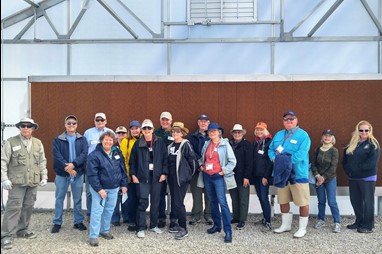 the country have halted production of their products or have delayed their shipments by one or two months. Additionally, with limited employees allowed at the lab, it’s difficult to ensure a staff member will be around to receive orders that do make it through the mail. Finally, putting together the hatchery and brood stock room would be much more efficient with two to three people working together, but due to social distancing I have been building and putting equipment together by myself but still moving forward to complete the project.
the country have halted production of their products or have delayed their shipments by one or two months. Additionally, with limited employees allowed at the lab, it’s difficult to ensure a staff member will be around to receive orders that do make it through the mail. Finally, putting together the hatchery and brood stock room would be much more efficient with two to three people working together, but due to social distancing I have been building and putting equipment together by myself but still moving forward to complete the project.
Overall, I’ve been grateful to be able to still work at the lab, but I’ve also been happy to save some time and gas money on the days I work from home. The faculty and staff have been very respectful and careful to maintain social distancing when around each other, while simultaneously trying their best to help maintain and produce data for specific research initiatives and projects. I’m looking forward to seeing the FSUCML community back together in the (hopefully) near future.
**Pictures taken before the statewide shutdown
Randi Bowman, PhD student, Brooke Lab
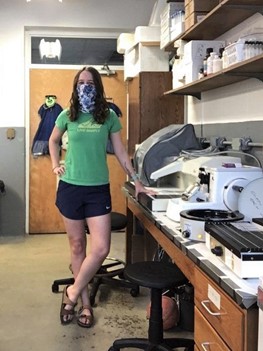 The day before the marine lab closed, I was happily bobbing around in the ocean with a scuba tank strapped to my back. The rest of the Brooke lab and I were diving to finish collecting data for the FWC artificial reef monitoring project, which tracks the presence and growth of bottom-dwelling marine organisms on artificial structures. On that day, I never would have imagined that the lab closure would last so long, or that my research-packed plan for my first field season as a PhD student would have to undergo some drastic changes. Pre-coronavirus, my summer research plans had included collecting coral samples and running lab experiments to test their response to multiple stressors. COVID-19 had other plans, however, causing both travel and field work to be restricted. Fortunately, I had already been maintaining a small batch of coral fragments that had been collected by my lab mates in February, so I was at least able to begin a pilot experiment.
The day before the marine lab closed, I was happily bobbing around in the ocean with a scuba tank strapped to my back. The rest of the Brooke lab and I were diving to finish collecting data for the FWC artificial reef monitoring project, which tracks the presence and growth of bottom-dwelling marine organisms on artificial structures. On that day, I never would have imagined that the lab closure would last so long, or that my research-packed plan for my first field season as a PhD student would have to undergo some drastic changes. Pre-coronavirus, my summer research plans had included collecting coral samples and running lab experiments to test their response to multiple stressors. COVID-19 had other plans, however, causing both travel and field work to be restricted. Fortunately, I had already been maintaining a small batch of coral fragments that had been collected by my lab mates in February, so I was at least able to begin a pilot experiment.
Since I had to take care of the coral fragments to keep them alive and healthy, I was granted access to live at the lab in the graduate dorms once the FSU campus closure took effect. New FSU safety protocols required pre-scheduling of times and locations to work around the lab in an effort to limit contact among CML faculty and staff members. While this has taken some getting used to, I’m happy to comply as it is necessary to ensure the health and safety of those currently using the marine lab.
The soft opening of the FSUCML has not changed my research capacity from what it was in lockdown, but it has allowed more people to return to the lab to continue  their work. Although field work is starting to open back up, the ability to scuba dive is still in question. Thus I decided to alter my summer plans so that diving was not required for my research. Instead, any permissible diving that I do will be in support of other graduate students in the Brooke lab, and I will be focusing on using a long-term monitoring dataset to assess changes in trait-based (functional) diversity of reef ecosystems across space and time.
their work. Although field work is starting to open back up, the ability to scuba dive is still in question. Thus I decided to alter my summer plans so that diving was not required for my research. Instead, any permissible diving that I do will be in support of other graduate students in the Brooke lab, and I will be focusing on using a long-term monitoring dataset to assess changes in trait-based (functional) diversity of reef ecosystems across space and time.
Throughout this entire process, my perception that grad school requires hard work, focus, flexibility, and compromise has only solidified. Quarantine has certainly not made things easier, but I have found some ways to cope. On workdays, I do virtual check-ins with a fellow CML grad student, which helps maintain structure and boosts productivity. As a person who also values the social aspect of grad school, quarantining an hour away from most of my friends has been difficult, but has been partially remedied via virtual happy hours and socially-distant camping trips. I also tested out a new hobby, painting! I have been jokingly told that the field work scene I painted on a glass bottle looks impressionistic, but I just had no idea what I was doing. I hope everyone out there is trying to make the best of these difficult times, and I look forward to seeing everyone on the other side of this pandemic!
Cullen Morris, FSUCML Marine Technician
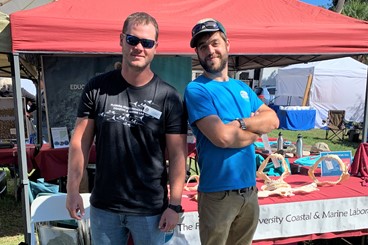 Before the lab closed due to COVID-19, I regularly assisted faculty, students, and visiting scientists with multiple research projects in varying fields. These projects included the FWC artificial reef monitoring project, GULFSPAN Big Bend shark surveys, the Apalachicola Bay System Initiative (ABSI), sediment coring for nematodes with the Meiolab (@meiolab on FB and Twitter), and the FWC shorebird habitat restoration project. I also occasionally helped visiting scientists with their sample collection, both inshore using FSUCML’s small boat fleet, and offshore on the R/V Apalachee. One such offshore trip focused on vibracoring (state-of-the-art sediment sampling methodology for retrieving continuous, undisturbed cores) for Pleistocene clays with geologists off the coast of Mississippi. Additionally, I continuously coordinated volunteer efforts throughout the lab, utilizing local citizen scientists, high school students, and FSU undergraduates.
Before the lab closed due to COVID-19, I regularly assisted faculty, students, and visiting scientists with multiple research projects in varying fields. These projects included the FWC artificial reef monitoring project, GULFSPAN Big Bend shark surveys, the Apalachicola Bay System Initiative (ABSI), sediment coring for nematodes with the Meiolab (@meiolab on FB and Twitter), and the FWC shorebird habitat restoration project. I also occasionally helped visiting scientists with their sample collection, both inshore using FSUCML’s small boat fleet, and offshore on the R/V Apalachee. One such offshore trip focused on vibracoring (state-of-the-art sediment sampling methodology for retrieving continuous, undisturbed cores) for Pleistocene clays with geologists off the coast of Mississippi. Additionally, I continuously coordinated volunteer efforts throughout the lab, utilizing local citizen scientists, high school students, and FSU undergraduates.
When the doors of the lab closed on April 3rd, my research centered activities became less diverse with significantly less field work. Fortunately, in an effort to keep our live animals and location-based research projects monitored, the lab enacted a limited employee rotation schedule. As one of the few employees granted access to the lab for a few hours each week, I was able to continue work on the FWC shorebird restoration project. I monitored shorebird activity as well as continued to landscape the restoration area to create an optimal nesting habitat (read more about the project here). On my remote work from home days, I was able to process 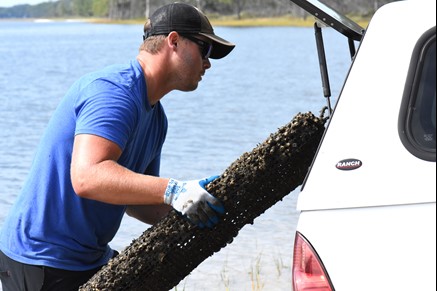 field data that had been backlogged from various labs. I also continued to assist graduate students with scientific requests. Since the lab re-opened at 25% capacity, I have been working with Chris Matechik (see interview below) on re-invigorating ABSI field work. We have been granted boat access – specifically using the Skeeter Bay Boat made available to the ABSI project by Yamaha RightWaters and Skeeter boats to continue monitoring the intertidal oyster bars in Alligator Harbor, Indian Lagoon, and Carrabelle River. While out in the field, we collect water quality data as well as a small sampling of oysters for analysis. Back at the lab we measure, shuck, and weigh the oysters to monitor their dry flesh to shell weight ratio to determine their condition. Oysters respond to various factors in their environment that affect shell thickness and flesh mass which, when measured, allows us to assess their general health.
field data that had been backlogged from various labs. I also continued to assist graduate students with scientific requests. Since the lab re-opened at 25% capacity, I have been working with Chris Matechik (see interview below) on re-invigorating ABSI field work. We have been granted boat access – specifically using the Skeeter Bay Boat made available to the ABSI project by Yamaha RightWaters and Skeeter boats to continue monitoring the intertidal oyster bars in Alligator Harbor, Indian Lagoon, and Carrabelle River. While out in the field, we collect water quality data as well as a small sampling of oysters for analysis. Back at the lab we measure, shuck, and weigh the oysters to monitor their dry flesh to shell weight ratio to determine their condition. Oysters respond to various factors in their environment that affect shell thickness and flesh mass which, when measured, allows us to assess their general health.
The soft opening and remote work schedule has made one thing abundantly clear - that the field aspect of marine biology is very difficult, and moreover, impossible to do from home. In terms of any positives that have come from this experience, I now have a greater appreciation for the comradery at the lab as I find working from home to be terribly dull.
**Pictures taken before the statewide shutdown
Chris Matechik, ABSI Research Assistant
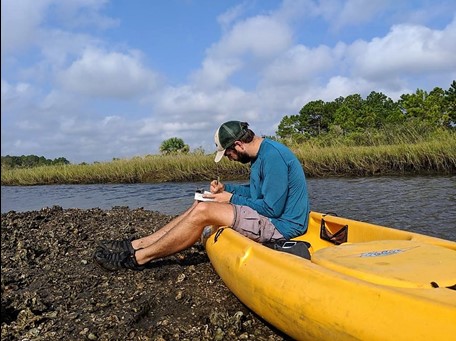 Before Florida State University (including the Coastal & Marine Laboratory) closed as a result of COVID19, I was monitoring intertidal oyster reefs in Indian Lagoon, St. Vincent Sound, Carrabelle River, and Alligator Harbor to determine the size and density of oysters on local reefs. I also prepared samples for genetic and reproductive analysis and constructed spat traps to later deploy at sites around the Apalachicola Bay System. During the closure, I have maintained monitoring efforts, but was unable to work at the lab full time, so I switched some of my focus to building an interactive web map that will house data that we collect as well as data from some of our partners illustrating where our work is being conducted. Since the lab’s soft-opening (25% return to work), we have continued monitoring our oyster sites and have started preparing to deploy water quality loggers throughout the Apalachicola Bay System. This research calls for fieldwork, which we have been able to accomplish by enhancing our safety procedures in an effort to reduce the risk of viral transmission among researchers. In order to minimize travel, we follow a strict employee rotation schedule and only use local staff rather than faculty or volunteers from FSU’s main campus. Whether working the lab or the field, we drive in separate cars, always wear masks, frequently use hand sanitizer, and stick to the same task all day so we avoid passing equipment back and forth. The FSUMCL has always placed safety first and although specific work guidelines have changed to reflect the current pandemic, the primary goal of SAFELY collecting valuable scientific data has not.
Before Florida State University (including the Coastal & Marine Laboratory) closed as a result of COVID19, I was monitoring intertidal oyster reefs in Indian Lagoon, St. Vincent Sound, Carrabelle River, and Alligator Harbor to determine the size and density of oysters on local reefs. I also prepared samples for genetic and reproductive analysis and constructed spat traps to later deploy at sites around the Apalachicola Bay System. During the closure, I have maintained monitoring efforts, but was unable to work at the lab full time, so I switched some of my focus to building an interactive web map that will house data that we collect as well as data from some of our partners illustrating where our work is being conducted. Since the lab’s soft-opening (25% return to work), we have continued monitoring our oyster sites and have started preparing to deploy water quality loggers throughout the Apalachicola Bay System. This research calls for fieldwork, which we have been able to accomplish by enhancing our safety procedures in an effort to reduce the risk of viral transmission among researchers. In order to minimize travel, we follow a strict employee rotation schedule and only use local staff rather than faculty or volunteers from FSU’s main campus. Whether working the lab or the field, we drive in separate cars, always wear masks, frequently use hand sanitizer, and stick to the same task all day so we avoid passing equipment back and forth. The FSUMCL has always placed safety first and although specific work guidelines have changed to reflect the current pandemic, the primary goal of SAFELY collecting valuable scientific data has not.
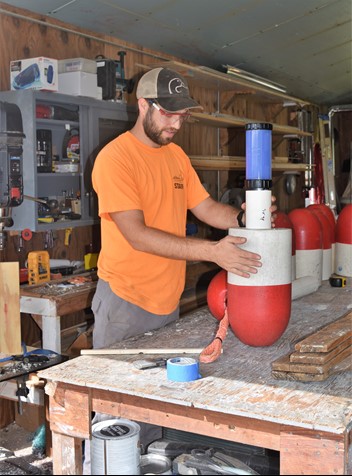 I haven’t found the new procedures hard to follow. Our crew is usually covered up anyway, including most of our faces, to protect ourselves from sun exposure, so adding a mask isn’t a big change. Funnily enough, I have actually become so accustomed to wearing a mask that I recently forgot I was wearing one and tried to eat my field lunch but ended up smearing a burger all over my mask instead. Unfortunately, I have also learned that most of these masks are designed for casual, short-term use, not the rigors of fieldwork. The elastic doesn’t seem to hold up well but we carry a few extras in case we have any failures. The lab’s soft opening and increased remote work hasn’t changed my perception of my job much. I have enjoyed working remotely, but aside from that, the overall experience has made me grateful that the FSUCML prioritizes safety and we have a dedicated staff who will come up with creative solutions to get the job done without putting anyone at an unacceptable level of risk. One positive to come out of the pandemic is people are beginning to recognize the importance of nature and open spaces to our wellbeing as individuals and society as a whole. Additionally, this situation has demonstrated that science has an important role in maintaining our quality of life, and that’s a lesson that has implications beyond the response to coronavirus. We have seen how valuable science can be. Now let’s start applying it to other topics such as managing fisheries for sustainable harvests, reducing pollution, investigating potential sources of greener energy, devising ways to grow food without massive inputs of chemical fertilizers and pesticides, and more.
I haven’t found the new procedures hard to follow. Our crew is usually covered up anyway, including most of our faces, to protect ourselves from sun exposure, so adding a mask isn’t a big change. Funnily enough, I have actually become so accustomed to wearing a mask that I recently forgot I was wearing one and tried to eat my field lunch but ended up smearing a burger all over my mask instead. Unfortunately, I have also learned that most of these masks are designed for casual, short-term use, not the rigors of fieldwork. The elastic doesn’t seem to hold up well but we carry a few extras in case we have any failures. The lab’s soft opening and increased remote work hasn’t changed my perception of my job much. I have enjoyed working remotely, but aside from that, the overall experience has made me grateful that the FSUCML prioritizes safety and we have a dedicated staff who will come up with creative solutions to get the job done without putting anyone at an unacceptable level of risk. One positive to come out of the pandemic is people are beginning to recognize the importance of nature and open spaces to our wellbeing as individuals and society as a whole. Additionally, this situation has demonstrated that science has an important role in maintaining our quality of life, and that’s a lesson that has implications beyond the response to coronavirus. We have seen how valuable science can be. Now let’s start applying it to other topics such as managing fisheries for sustainable harvests, reducing pollution, investigating potential sources of greener energy, devising ways to grow food without massive inputs of chemical fertilizers and pesticides, and more.
**Pictures taken before the statewide shutdown
Eve Moore, Marine Technician
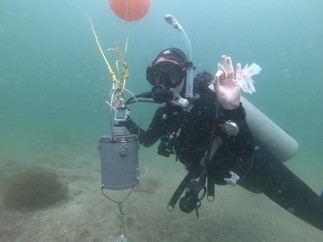 I am a recent graduate of the University of Florida and now work as a marine technician for Dr. Sandra Brooke. Before the COVID closure, Dr. Brooke and I worked extensively in the field at the St. Mark’s National Wildlife Refuge monitoring artificial reefs as part of a Florida Fish and Wildlife Conservation Commission (FWC) project. We are monitoring the growth of benthic flora and fauna growing on artificial reefs, as well as the other marine organisms that inhabit reef communities. We managed to complete our fieldwork the day before the lab closure took effect. My job is to process and identify organisms in photos taken during our surveys, using them to create an invertebrate reference collection. I also participate in field work once a week associated with the Apalachicola Bay System Initiative, working with Chris Matechik, Research Assistant and Lead Field Technician for ABSI. My job is to evaluate oyster density and condition, and lend a hand where needed with other ABSI research tasks.
I am a recent graduate of the University of Florida and now work as a marine technician for Dr. Sandra Brooke. Before the COVID closure, Dr. Brooke and I worked extensively in the field at the St. Mark’s National Wildlife Refuge monitoring artificial reefs as part of a Florida Fish and Wildlife Conservation Commission (FWC) project. We are monitoring the growth of benthic flora and fauna growing on artificial reefs, as well as the other marine organisms that inhabit reef communities. We managed to complete our fieldwork the day before the lab closure took effect. My job is to process and identify organisms in photos taken during our surveys, using them to create an invertebrate reference collection. I also participate in field work once a week associated with the Apalachicola Bay System Initiative, working with Chris Matechik, Research Assistant and Lead Field Technician for ABSI. My job is to evaluate oyster density and condition, and lend a hand where needed with other ABSI research tasks.
Since the soft-opening, I have had significant blocks of time to process nearly all of the images from the S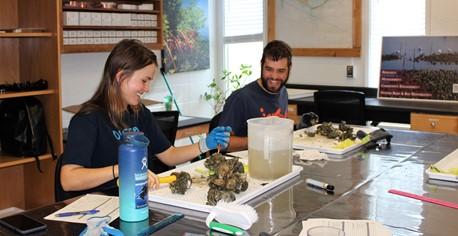 t. Mark’s artificial reef project, a whopping collection of over 1,900 quadrat photos spanning just over a year of seasonal sampling. However, I have not been able to assist with any hands-on lab or fieldwork for ABSI, aside from building spat traps in my garage. The traps are intended to capture settling larval oysters. Rather, I have taken the opportunity created by working remotely to organize the ABSI team’s vast collection of references into an easily accessible database. This will facilitate our ability to pull together relevant information on any of a variety of topics, from oyster ecology to socio-economics and modeling, for writing reports, publishing papers, and providing the funders with required deliverables related to our research.
t. Mark’s artificial reef project, a whopping collection of over 1,900 quadrat photos spanning just over a year of seasonal sampling. However, I have not been able to assist with any hands-on lab or fieldwork for ABSI, aside from building spat traps in my garage. The traps are intended to capture settling larval oysters. Rather, I have taken the opportunity created by working remotely to organize the ABSI team’s vast collection of references into an easily accessible database. This will facilitate our ability to pull together relevant information on any of a variety of topics, from oyster ecology to socio-economics and modeling, for writing reports, publishing papers, and providing the funders with required deliverables related to our research.
The COVID closure has made me value the people I work with even more. I’ve been very impressed by how hard the lab administrators and ITS team have been working to keep us up and running. On a personal note, with more downtime at home, I’ve enjoyed talking to my distant friends and family, as well as getting back into some of my passion projects, like painting and writing.
**Pictures taken before the statewide shutdown

